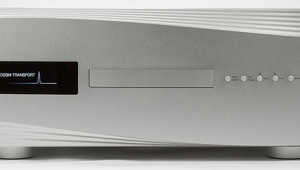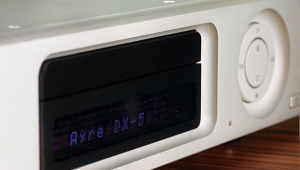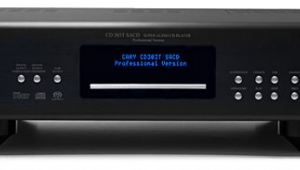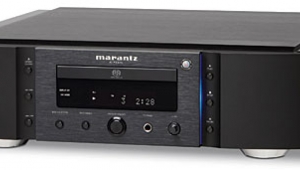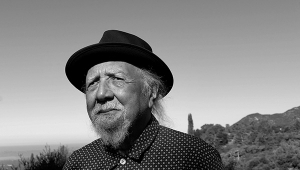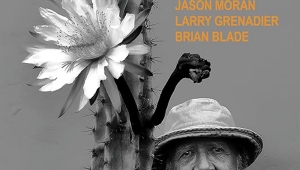| Columns Retired Columns & Blogs |
dCS Scarlatti SACD/CD playback system Page 3
Though it definitely sounded richer and breathed more easily when run in balanced mode, the dCS Scarlatti was easily the most satisfying SACD player I've heard.
Cary on
Cary Audio Design's impressive-sounding CD 306 Professional SACD player ($8000) that John Atkinson reviewed in November 2008 was available, so I did some comparisons with that. The Cary sounded "fast," exciting, slightly forward, and a bit "etchy" and mechanical. Good as it was, it was no match for the Scarlatti's harmonically richer, more dimensional, microdynamically superior, more relaxed, more detailed sound. The Cary was "present," the Scarlatti nonexistent. One was clearly "great digital," the other simply great.

Scarlatti Master Clock
David Chesky's Area 31 (SACD, Chesky SACD288) sounded nothing less than fierce (in a positive way) through the Cary, but with hyper-defined leading edges, akin to turning up a TV's Sharpness control. Handclaps were hard, and in Chesky's Violin Concerto, with the Area 31 ensemble conducted by Anthony Aibel, soloist Tom Chiu's violin was edgier than what would be considered natural, but the presentation still sounded dimensional and exciting. Through the Scarlatti, this spacious recording produced a nonmechanical, artifact-free, three-dimensional, effervescent, texturally supple soundscape in which the performers were more cleanly delineated from the spacious surroundings, while producing a far more convincing presentation of Chiu's violin.
Bring out your dead!
Days before writing this review, I heard from two former owners of the Verdi-Purcell-Elgar stack, both of whom had sold them because they were dissatisfied with the system's playback of CDs. One missed listening to SACDs, the other couldn't care less.
The real test of the Scarlatti, then, given the profusion of software, is how well it plays CDs. The problem is, after comparing some 24-bit/96kHz digital downloads played from my Apple G4 laptop vs their 16/44.1 CD versions played on the $32,999 Scarlatti transport, it was easy to conclude that while the Scarlatti system is a much better CD player than the Verdi-Elgar-Purcell, spending big dollars on CD playback in 2009 might not be such a good investment.
The growing popularity of server-based sources and other digital peripherals adds greater utility to a multi-input DAC and makes for a more worthwhile investment. The biggest change, though, has been Internet access to high-resolution audio files. Most current digital recordings are made at higher-than-"Red Book" resolution and some labels—Linn, 2L, AIX, Chesky's HDTracks, for example—are making high-resolution original digital files available. Meanwhile, the major record labels are scurrying to convert their vaults full of analog tape to 24/96; at some point soon the floodgates will open, and you'll be able to download hi-rez digital files of all your analog favorites.
However, while hi-rez files can be downloaded today, the selection remains limited, download times are long, and configuring a computer to play audio with full resolution is a genuine pain that turns off or confuses many audiophiles. You can bet that, even as you read this, audiophile and non-audiophile companies alike are working to produce a convenience "skin" that will make the computer "disappear," even though it will still be doing the work below the surface: going online, downloading music files, album covers, and metadata, configuring them for proper playback, and displaying them on an easy-to-use handheld screen.
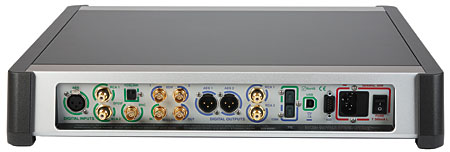
Scarlatti Upsampler
Server-type devices like the Sooloos Music Server and those from some other companies are already doing this, or are close to. For now, however, the Sooloos can only rip CDs. (By the time you read this, the updated software required to do what I've just described may be available.) But if you have bought one of the server-based systems and transferred your CDs to it, what you're likely to hear is what I heard through the Scarlatti. While "Red Book" CDs sounded as good as they're ever likely to through the Scarlatti system (especially, in my opinion, when upsampled to 24/176), comparing them to native 24/96 versions of the same material fed via USB to the Scarlatti Upsampler will conclusively prove to you what I and others have been saying for decades: upsampled, upconverted, sprinkled with holy water, trimmed around the edges, Bedini-treated—whatever you do to them, CDs just squeak by as a high-performance audio format. Still, played through the dCS Scarlatti, the best ones sounded very good indeed.
High resolution
Right about now you're probably saying, "Fremer shouldn't have been assigned this review." Patience, please. You'll find this out for yourself. If, after comparing a familiar CD you own to its hi-rez version, you decide the CD is good enough, well then, you're all set—but I'll bet "good enough" isn't good enough for most of the enthusiasts who regularly read Stereophile, especially if another 10 bucks will get you greatly enhanced musical performance from a favorite recording.
I accessed 24/96 files of Eiji Oue and the Minnesota Orchestra's Exotic Dances from the Opera—a Dr. Keith O. Johnson sonic spectacular—and compared them to the CD version (Reference RR-71 CD). The difference was ridiculous. The files, played on a $2000 computer via the dCS Upsampler's USB port, sounded airy, spacious, texturally delicate, and produced a profusion of harmonic colors that were masked by the CD's harder, more constricted sound. The downloaded sound was relaxed and flowing, and made me want to sit down and listen. The CD was harder-edged, spatially constricted, dry. I didn't want to listen—and I didn't. Not that it sounded bad. It's still a great recording, as are many of the recordings shoehorned into the 16/44.1 format.
I listened to the CD "straight up" at 16/44.1, upsampled to 24/176.4, and upsampled to DSD. They sounded different, but no CD version sounded as good as the hi-rez file. I can understand why some might prefer the upsampled versions, but it won't be because there was more information. The DSD sounded smoother for sure, but the 16/44.1 playback had better focus, and on most discs produced greater image solidity and three-dimensionality. The better a CD sounded, the better it sounded "straight up"—though I ended up preferring 24/176 upsampling, which combined excellent image focus and spatiality with the sensation of hearing more information. The harder-edged a disc's sound, the better it sounded upsampled to DSD. As with the Scarlatti DAC's multiple filter choices, listen and choose what you like. What you like will probably change, depending on the source.
Music Served
The question you need to ask yourself at this pivotal point in digital time is: To maximize what's possible from CD while waiting out the future of hi-rez downloads, do you spend a lot of money on an exotic transport? Or do you spend a lot less and dump all your CDs to a hard-drive–based server, thus gaining convenience and what many consider to be sound superior to that of any optical-based system?
It was easy enough to rip CDs to the Sooloos Music Server as FLAC files (the Sooloos now handles WAV files) and then compare them to "live" CD playback through the Scarlatti transport. Some say that FLAC files don't sound as good as WAV files—the makers of the Blue Smoke server, for instance, which uses WAV and a system based on Windows Vista. Yet when I compared the ripped FLAC files to the Scarlatti transport's playback, whatever differences there may have been were picked nits compared to what I heard when comparing CDs to hi-rez files of the same material.
- Log in or register to post comments

